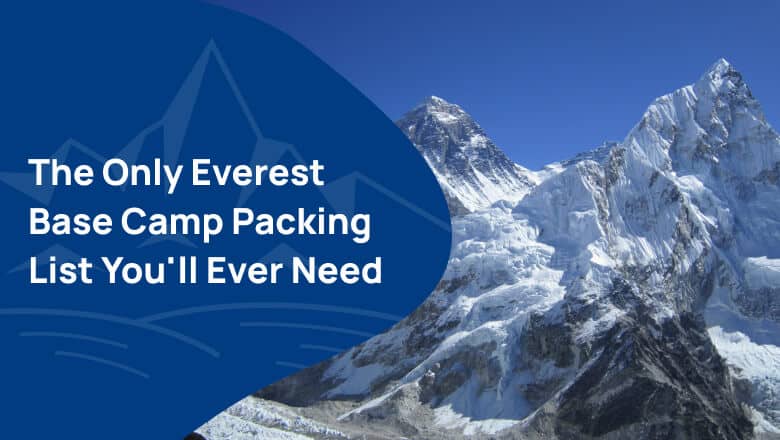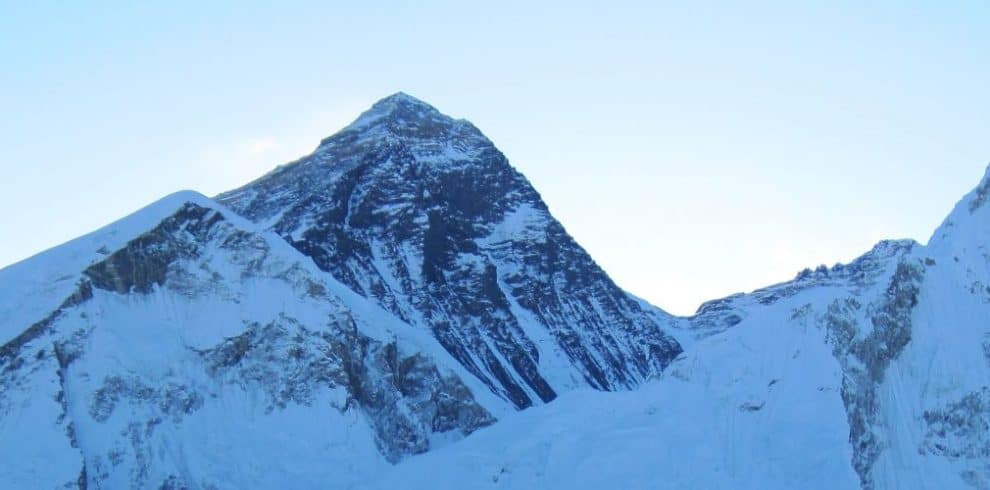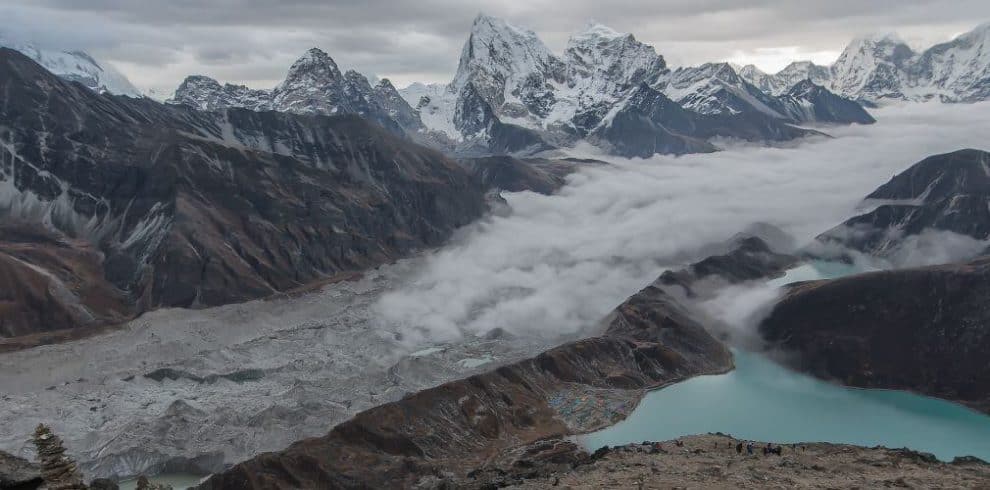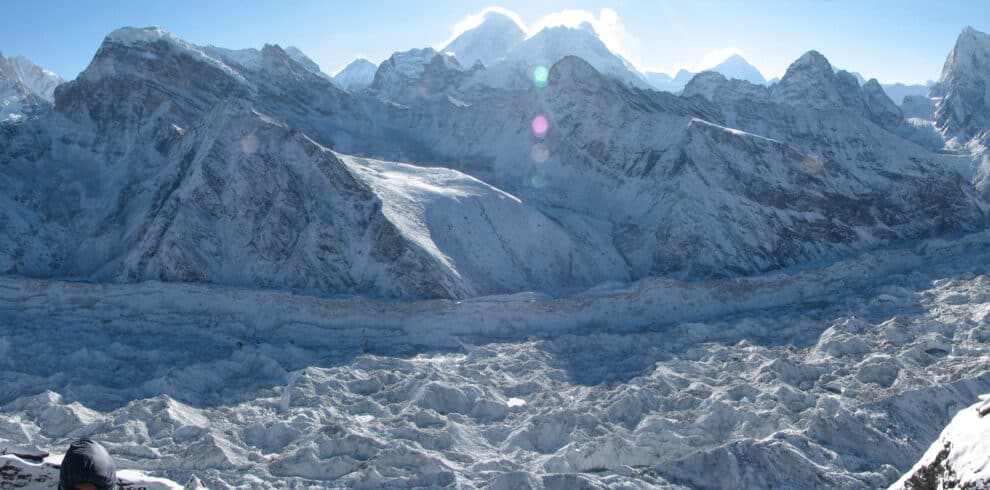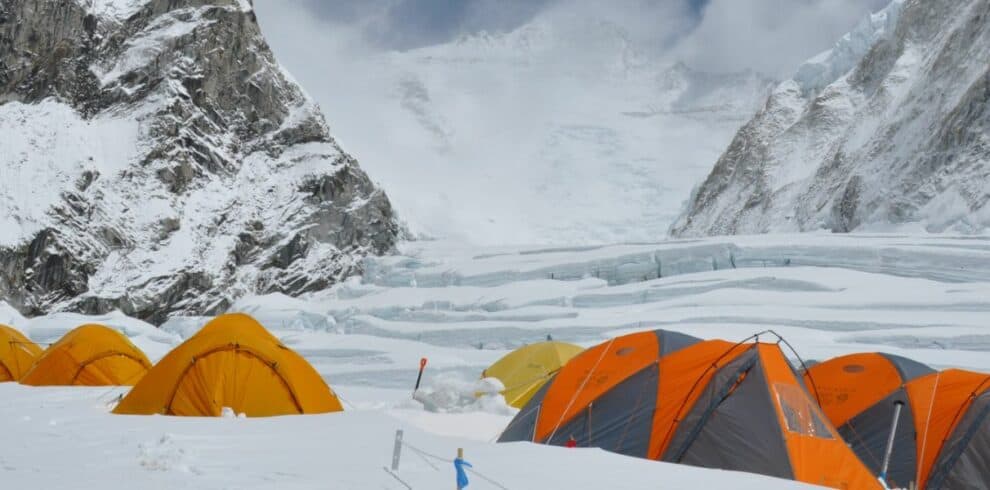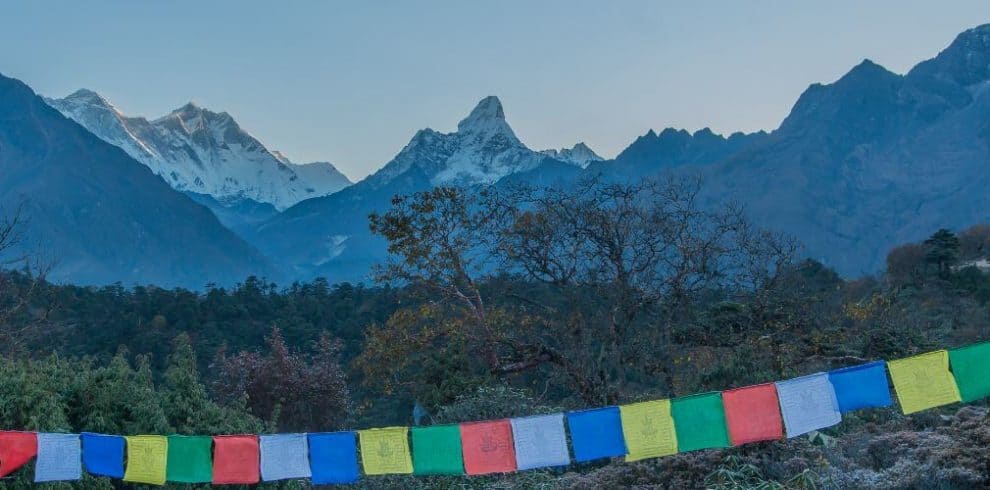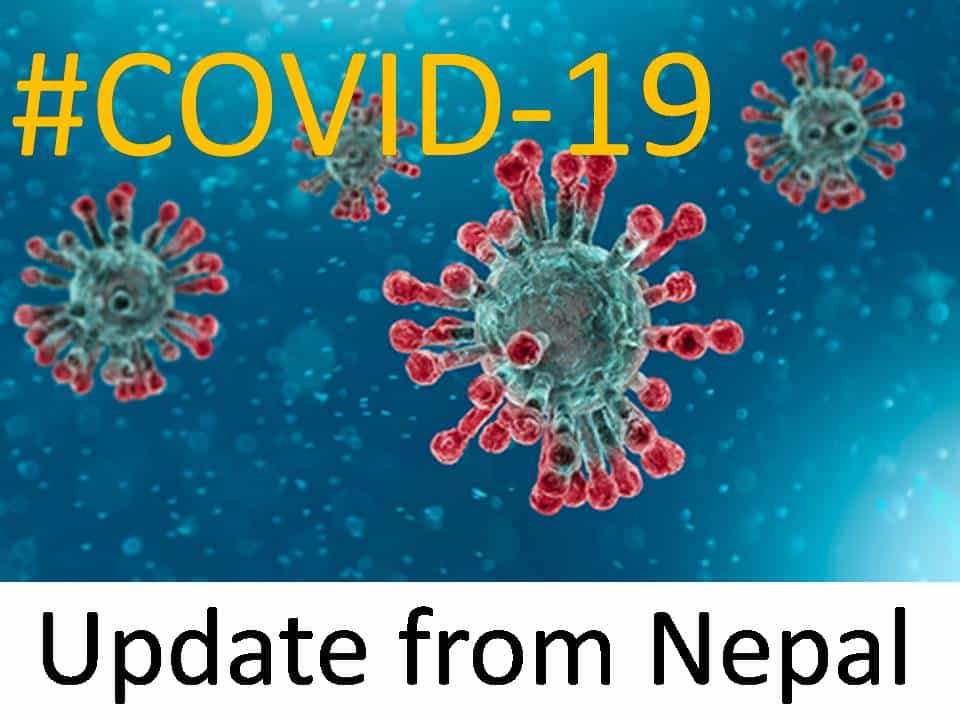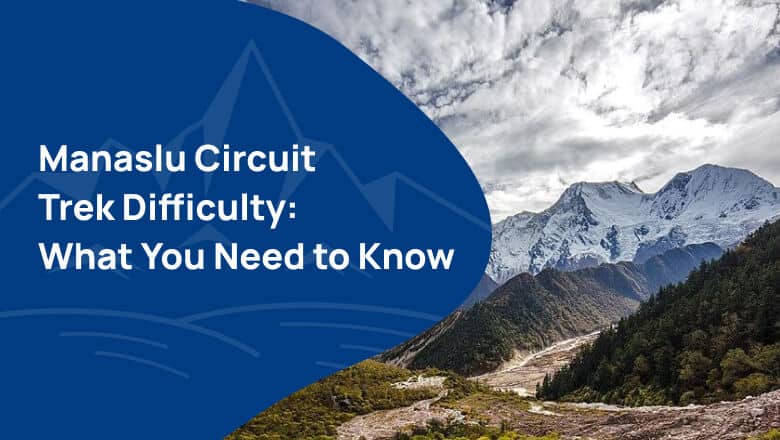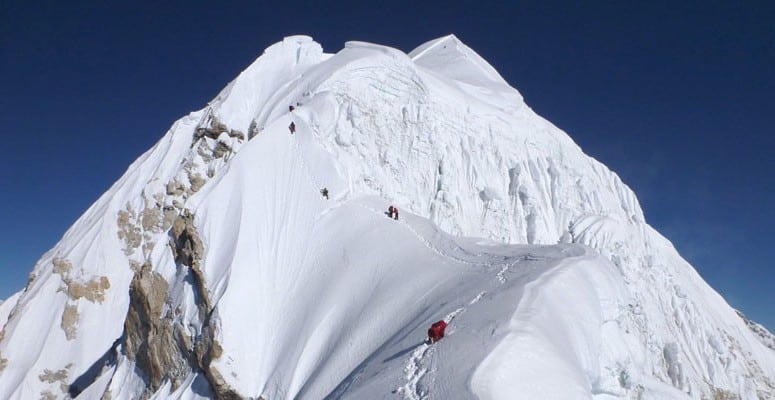Hey there! So, you made the decision to undertake Everest Base Camp Trek. That’s amazing!
But before you head out, let’s go over a few things you should know and do to make sure you have a safe and enjoyable trip.
- Research everything about the Everest Trekking guide.
- Plan and Book a trip with a reputable and experienced trekking company
If you’ve taken care of those things, then it’s time for you to start packing your backpack, which is one of the most daunting tasks. It’s easy to get carried away and overpack, but remember that you’ll be carrying your backpack for most of the trek.
Not to mention, you will be responsible for carrying all of the trekking supplies by yourself. So, you must pack smart and light.
Don’t worry if you’re feeling overwhelmed. I’m here to help.
I have compiled an easy-to-navigate and complete list of what you will need for the typical Everest Base Camp Trek and similar treks in the region.
Quick Tips: You can rent or buy most of the equipment in Kathmandu or Namche Bazaar, but it’s important to remember that there is a chance you may be sold cheaper, local equipment that may not be up to the standards of equipment bought before you travel.
Contents
- 1. Clothing
- 2. Footwear
- 3. Trekking Gear & Supplies
- Everest Base Camp Trek
- 4. Food & Snacks
- 5. Toiletries
- 6. Additional Supplies
- 7. Important Documents
- FAQs
- 1. How many bags should I bring for Everest Base Camp Trek?
- 2. Is it necessary to bring a sleeping bag for Everest Base Camp Trek?
- 3. Do I need to bring a water purification system for Everest Base Camp Trek?
- 4. Can I buy gear in Kathmandu?
- 5. What size backpack do I need for Everest Base Camp?
- Get in Touch with Our Trekking Experts Today
- Ready to Book Trips Now?
- Jiri to Everest Base Camp
- Everest High Passes Trek – 20 Days
- Everest Base Camp Trek
- Everest Panorama View Trek
- Everest View Trek
- Everest Base Camp Charity Yoga Trek
Do you have any question about trip to Nepal?
Tell us about your trip to Nepal and what you expect from it. We will answer your questions in 24 hours and help you design a trip with a comfortable itinerary to meet your needs best.
1. Clothing
What clothing you pack for the trek heavily depends on the time of the year. It’s best to check the weather condition of the Everest region. In addition, the weather in the Himalayas can be unpredictable, so the best way to keep your body warm is to dress in two to three layers.
Here’s a list of clothing items you should consider bringing:
- Moisture-wicking long-sleeve t-shirts (2)
- Moisture-wicking short-sleeve t-shirt (1)
- Heavy fleece or down jacket
- Gortex or waterproof jacket with hood
- Windbreaker
- Rain poncho
- Fleece pants
- Trekking pants (2)
- Hiking shorts (1)
- Waterproof pants
- Long underwear (2)
- Underwear (10)
- Light inner gloves/glove liners
- Insulated wool or down mittens/gloves
- Sunglasses
- Broad-brimmed hat
- Neck gaiter or bandana (for sun protection)
- Wool hat or balaclava (should cover ears)
- Sweatshirt (optional)
2. Footwear
Choosing the right footwear is crucial for the trek to Everest Base Camp. Think about it, your feet are what get you to Base Camp and back, so you want to make sure you have comfortable trekking boots.
Aches and blisters are a nightmare that no one wants to experience, so spend more money on good-quality boots and socks.
Here are the recommended footwear options:
- Hiking socks (10)
- Warm thermal socks (1)
- Trekking boots with ankle support
- Camp shoes or tennis shoes
- Sock liners (optional)
- Gaiters (needed Dec-Feb)
3. Trekking Gear & Supplies
Here’s a list of trekking gear items you should consider bringing:
- Duffle bag for carrying gear via porters (provided by Nepal Social Treks if you’re trekking with us)
- 40L Daypack for carrying what you need on the trail
- Waterproof cover for a daypack
- Water bottles or hydration bladder (i.e., CamelBak)
- Sleeping bag rated to -18°C/ 0°F (available for rental if you’re trekking Everest Base Camp through Himalayan Wonders)
- Trekking poles
- Headlamp with extra batteries
- Lightweight water filter or iodine water tablets (personal preference)
- Hand warmers
- Travel pillow or pillowcase
- Sleeping bag stuff sack
- Drybags in several sizes
- Stuff sacks for dirty clothes/shoes
- Camera with extra batteries and memory cards
- Small lock(s) for duffle bag and daypack
- Sleeping bag liner (optional)
- Quick-drying trekking towel (optional)
Quick Tips: Electronics can be heavy, so only take the necessary items! Remember to charge everything before departing, as the trail has limited electricity.
Book an Everest Base Camp Trek Now
4. Food & Snacks
While there are tea houses along the trek that offer meals and snacks, carrying some snacks can help boost your energy levels and keep you going when you need a quick pick-me-up.
Here are the recommended options:
- Snacks (combine protein & carbs for well-balanced energy)
- Thermos (optional for hot beverages)
- Re-hydration gels or powder
5. Toiletries
Carrying toiletries is essential for personal hygiene, protection from the elements, preventing illness, oral hygiene, and convenience during the Everest Base Camp trek.
Here’s a list of toiletries items you should consider bringing:
- Sunscreen
- Lip balm with sunscreen
- Toilet Paper
- Moleskin, medical tape, and/or duct tape for treating/preventing blisters
- Advil or Ibuprofen
- Diamox (for altitude sickness)
- Personal prescriptions
- Antibiotics (Cipro for travelers’ diarrhea)
- Anti-chafe balm (e.g., Body Glide, to prevent chafing)
- Diaper rash cream (Can treat rashes or chaffing)
- Soap
- Deodorant
- Toothbrush/toothpaste
- Razor (as needed)
- Shampoo
- Wet wipes
- Hand sanitizer
- Feminine hygiene products (as needed)
- Face lotion
- Hairbrush
- Hair ties
- Earplugs (for sleeping)
6. Additional Supplies
- Portable solar charger/power bank
- Book
- Journal/pen
- Playing cards
7. Important Documents
- Passport (needed at the entry gate for registration)
- Visa (these are easy to attain when you land in Kathmandu—bring $30 (15 Days) or $50 (30 Days) USD for Visa Application.
- Money ($200-300 cash is recommended—while there are occasional ATMs on the trail, they are almost always out of order)
- One passport-sized photo if trekking in the Annapurna Region (needed at times for trekking permit). Not required for Everest Treks.
- Travel Insurance
Packing for the Everest Base Camp trek can be overwhelming, but with this comprehensive packing list, you should be able to pack all the essential items needed for the trek. Remember to pack smartly and only bring what’s necessary to make your trek comfortable and enjoyable.
If you have any further questions on this Everest Base Camp Packing List, please comment below, and we will respond within 24 hours.
FAQs
1. How many bags should I bring for Everest Base Camp Trek?
You should bring a duffel bag or backpack for your trekking gear and a daypack for your daily essentials.
2. Is it necessary to bring a sleeping bag for Everest Base Camp Trek?
Yes, it is necessary to bring a sleeping bag rated to at least -15°C as temperatures can drop significantly at night, especially at higher elevations. It is also advisable to bring a sleeping pad and pillowcase for added comfort.
3. Do I need to bring a water purification system for Everest Base Camp Trek?
Yes, it is essential to bring a water purification system as the water in the mountains may not be safe to drink. You can use water purification tablets or a filtration system to ensure that you have clean drinking water throughout your trek.
4. Can I buy gear in Kathmandu?
There are many outdoor gear shops and markets in Kathmandu that sell trekking gear at reasonable prices. However, it is important to ensure that you are buying high-quality gear from a reputable seller, as counterfeit products are common in the area.
5. What size backpack do I need for Everest Base Camp?
In the Everest base camp trek, a backpack with a capacity of 60-75 litres should be sufficient for a 12-14 day trek.

